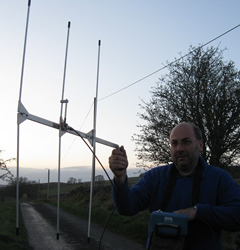Bats in Trees
All Scottish bat species roost in trees to a greater or lesser extent. Often it is difficult to ascertain whether a tree may contain a bat roost. Roost holes may be high above ground level and difficult to see, especially in summer, when foliage can obscure the view.
Certain physical signs can help. For example, droppings below a roost entrance or smear marks at a tree hole. On a warm day "chittering" sounds can sometimes be heard from a roost.
Features used by bats include rotted-out holes, cracks, split branches and under loose bark. Some species of tree are more likely to offer suitable roost sites than others, for example Ash or old Oak trees often have suitable features, whereas most conifers do not.
To identify whether a bat roost may be present in a tree a visual survey allows features with potential for roosting bats to be identified. In some cases it may be necessary to use access equipment to examine features in trees. Usually an endoscope is used to look inside cracks and holes, for the presence of bats and for droppings and other signs. A sunset emergence survey, using bat detectors may show the presence of an occupied roost.
All bat roosts are legally protected, whether or not bats are present. Disturbing or destroying a roost is a criminal offence, unless a derogation license is first obtained. Ignorance of their presence is no defence if a bat survey has not been carried out.



